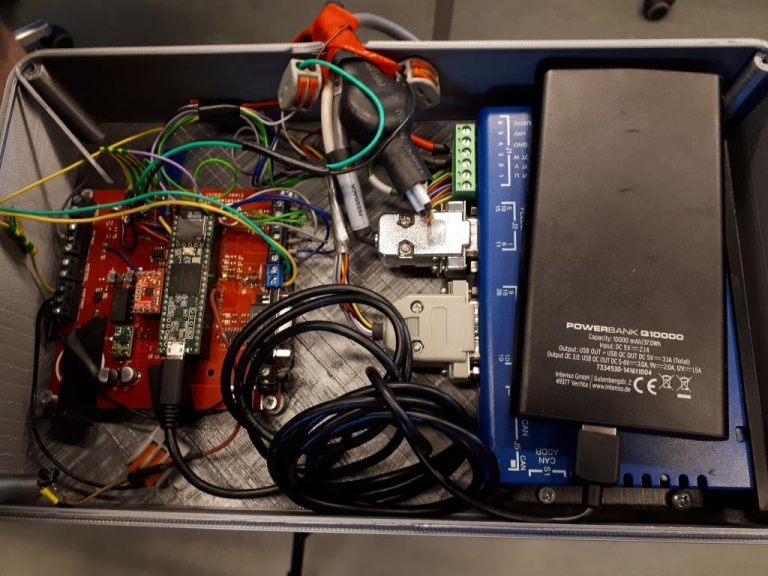The TU Delft Bicycle dynamics lab has prototyped a steer-assist electric bike to make riding fall-proof. “Our priority is people’s safety,” says Professor Arend Schwab.
Professor Arend Schwab with the e-bike prototype. (Photos: Davide Zanon)
Each year, there are 4,400 single-vehicle accidents involving cyclists aged over 55 years old in the Netherlands. One hundred and twenty of them end up being fatal. TU Delft, in cooperation with Koninklijke Gazelle, found this rising trend a good reason to develop a fall prevention system for electric bicycles.
“Loss of balance at slow speeds is the problem,” says TU Delft Professor and Director of the Bicycle dynamics lab, Arend Schwab. “Actions such as over the shoulder checks, indicating with your hand to turn, mounting and dismounting a bicycle can be dangerous for elderly and disabled people. We developed a mathematical model that can predict the stability of a bicycle design at various speeds and we published it in Science.”
The e-bike’s steer-assist system echoes the game of balancing a stick on your palm. To keep it vertical, the trick is to move your hand in the direction of the fall. Similarly, if, through a sensor, the algorithm detects a lean rate above a specific threshold, the smart motor in the front rotates the handlebar and gets the e-bike upright. “When you lean over on your bicycle, the trick is to steer the handlebar in the same direction to get it upright again,” says Schwab. “It is counter-intuitive for people but, if the speed is above 4 km/h, the steer-assist system does the job for you. With enough speed, the e-bike is stable enough to go on its own.”


Part of the smart motor in the rear side of the e-bike.
With the plan to hit the market in 2021, the target for Schwab and his team now shifts to the users. “We have taken care of the technology, it is now time to develop our studies in the human-interface area,” says Schwab. “We want to understand cyclists’ reactions if the steering is soft or hard and find the right balance so they feel comfortable.”
Riding the e-bike echoes the sensation of a parent pushing a child’s back on his first ride without training wheels — instilling security against potential falls. “The best message given by this e-bike is hope,” says Schwab. “Mobility is critical for elderly and disabled people. If they lose it, they lose everything. This e-bike shows them that they can continue to be independent and active members of society.”
Davide Zanon / Science Editor trainee



Comments are closed.